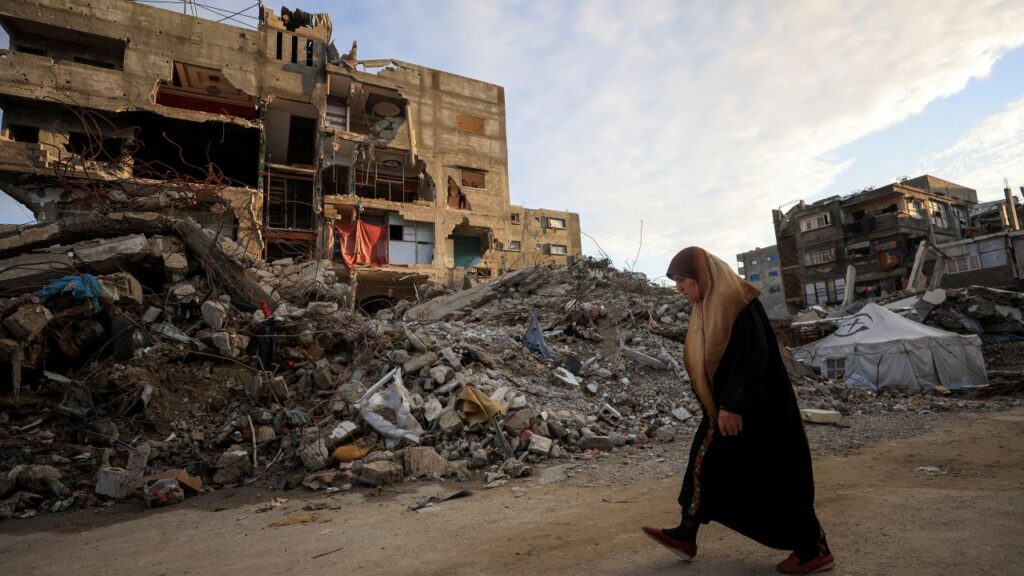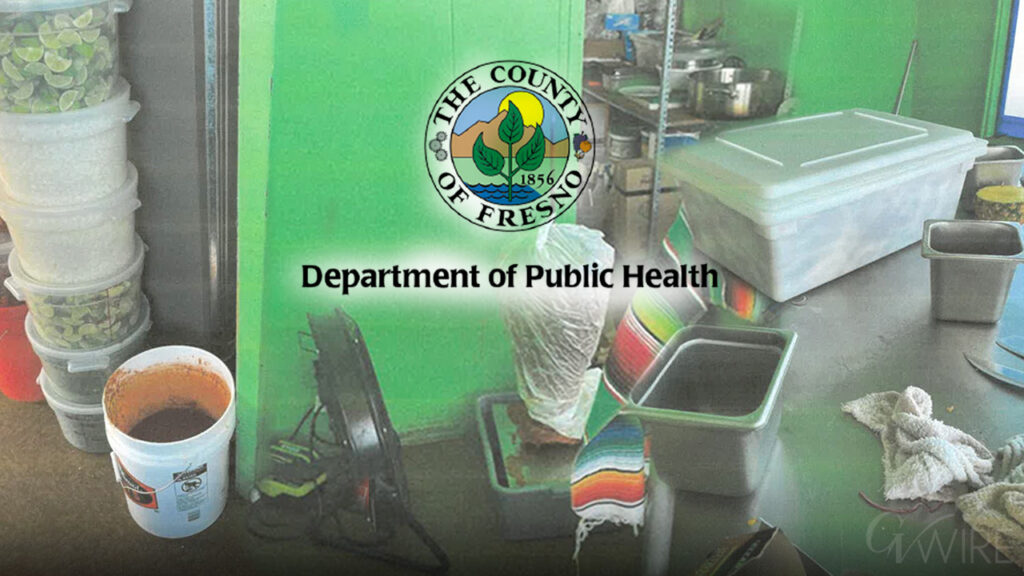Hurricane Helene's devastating impact leaves communities struggling to recover as death toll rises and search efforts continue. (AP/Mike Stewart)

- Search crews use helicopters and hike through wilderness to reach isolated homes in storm-ravaged areas.
- President Biden estimates recovery costs in billions, with over 150,000 households registered for FEMA assistance.
- Widespread power and cellular outages hinder recovery efforts, leaving many frustrated and unable to communicate.
Share
|
Getting your Trinity Audio player ready...
|
SWANNANOA, N.C. — Cadaver dogs and search crews trudged through knee-deep muck and debris in the mountains of western North Carolina on Tuesday looking for more victims of Hurricane Helene days after the storm carved a deadly and destructive path through the Southeast.
With Helene’s death toll nearing 160, searchers fanned out, using helicopters to get past washed-out bridges and hiking through wilderness to reach isolated homes.
Widespread Devastation and Power Outages
The storm, which was one of the deadliest in U.S. history, knocked out power and cellular service in some towns and cities, leaving many people frustrated, hot and increasingly worried days into the ordeal. Some cooked food on charcoal grills or hiked to high ground in the hopes of finding a signal to let loved ones know they are alive.
In Augusta, Georgia, Sherry Brown was converting power from the alternator of her car to keep her refrigerator running and taking “bird baths” with water she collected in coolers. In another part of the city, people waited in line more than three hours to try to get water from one of five centers set up to serve more than 200,000 people.
The devastation was especially bad in the Blue Ridge Mountains, where at least 57 people died in and around Asheville, North Carolina, a tourism haven known for its art galleries, breweries and outdoor activities.
“Communities were wiped off the map,” North Carolina’s governor, Roy Cooper, said at a news conference Tuesday.
Related Story: Rescuers Race to Free People Trapped by Hurricane Helene After Storm Kills at ...
Survivors Struggle in Aftermath
In Swannanoa, a small community outside Asheville, receding floodwaters revealed cars stacked on top of others and trailer homes that had floated away during the storm. Roads were caked with mud and debris and pockmarked by sinkholes.
Cliff Stewart survived two feet of water that poured into his home, topping the wheels on his wheelchair and sending his medicine bottles floating from room to room. Left without electricity and reliant on food drop-offs from friends, he has refused offers to help him leave.
“Where am I going to go?” the Marine Corps veteran said Tuesday. “This is all I’ve got. I just don’t want to give it up, because what am I going to do? Be homeless? I’d rather die right here than live homeless.”
Related Story: What to Know About Hurricane Helene and the Flooding the Storm Left Across the ...
Massive Relief Efforts Underway
Exhausted emergency crews worked around the clock to clear roads, restore power and phone service, and reach those still stranded by the storm, which killed at least 159 people in six states, including many who were hit by falling trees or trapped in flooded cars and homes. Nearly half of the deaths were in North Carolina, while dozens of others were in South Carolina and Georgia.
President Joe Biden, who is set to survey the devastation in North and South Carolina Wednesday, estimated the recovery could cost billions.
“We have to jump start this recovery process,” he said Tuesday. “People are scared to death. This is urgent.”
More than 150,000 households have registered for assistance with the Federal Emergency Management Agency, and that number is expected to rise rapidly in the coming days, said Frank Matranga, an agency representative.
Nearly 2 million ready-to-eat meals and more than a million liters of water have been sent to the hardest-hit areas, he said.
The storm unleashed the worst flooding in a century in North Carolina, dumping more than an estimated 2 feet (61 centimeters) of rain in places.
Cooper said Tuesday that more than two dozen water plants remained closed and were not producing water.
Active-duty U.S. military units may be needed to assist the long-term recovery, he said, adding that Biden had given “the green light” to mobilizing military assets in the near future.
A section of one of the region’s main arteries, Interstate 40, reopened Tuesday after a mudslide was cleared, but a collapsed stretch near North Carolina’s border with Tennessee remained closed.
Related Story: More Deadly Than Wind, Storm Surge From Hurricane Helene Could Be Devastating
Communities Struggle to Rebuild
Residents and business owners wore masks and gloves while clearing debris Tuesday in Hot Springs, North Carolina, where almost every building along the tiny town’s main street was heavily damaged.
Sarah Calloway, who owns the deli and gourmet grocery Vaste Riviere Provisions, said the storm arrived in town frighteningly quickly. She helped fill sandbags the day the night before, but they turned out to be useless. The water rose so rapidly that even though she and others were in an apartment on an upper floor, she feared they would not be safe. They called to request a rescue from a swift water team.
“They tried to get to us, and at that point they couldn’t,” she said. “Luckily, that was when the water started to recede.”
“It was really challenging to watch how quickly it rose up and then just to watch whole buildings floating down the river. It was something I can’t even describe,” she said.
In the Black Mountain Mobile Home Park in Swannanoa on Tuesday, Carina Ramos and Ezekiel Bianchi were overwhelmed by the damage. The couple, their children and dog fled in the predawn darkness on Friday as the Swannanoa River’s rapidly rising waters began flooding the bottom end of the mobile home park. By then, trees were blocking the roads and the couple abandoned their three vehicles, all of which flooded.
“We left everything because we were panicking,” Ramos said.
Their children were staying with Ramos’ parents and did not want to even see the devastated trailer.
“My daughter was crying, panicking,” Ramos said. “She says she doesn’t want to see her room full of toys, all thrown everywhere.”
Communication Challenges Hinder Recovery
The widespread damage and outages affecting key communications infrastructure left many people without stable access to the internet and cellular service, the Federal Communications Commission said.
Mayor Zeb Smathers of Canton, North Carolina, expressed frustration Tuesday that so many of his constituents were still without cellphone service with no clear timetable for when it would be restored.
“People are walking the streets of Canton with their phones up in the air trying to catch a cellphone signal like it’s a butterfly,” he told The Associated Press. “Every single aspect of this response has been extremely crippled by lack of cellphone communication. The one time we absolutely needed our cellphones to work they failed.”
Teams from Verizon were working to repair downed cell towers, damaged fiber cables and provide alternative forms of connectivity across the region, the company said in a statement.
AT&T, meanwhile, said it launched “one of the largest mobilizations of our disaster recovery assets for emergency connectivity support.”
The efforts to restore service was made more challenging by the region’s terrain and spread-out population, said David Zumwalt, president and CEO of the Association for Broadband Without Boundaries.
Widespread Impact Across Southeast
Helene blew ashore in Florida late Thursday as a Category 4 hurricane and upended life throughout the Southeast, where deaths were also reported in Florida, Tennessee and Virginia.
Across Georgia, Helene’s inland path knocked out power and shattered lives from Valdosta to Augusta, where a line of cars waiting to get water Tuesday stretched at least a half-mile (0.8 kilometers) down the road.
“It’s been rough,” said Kristie Nelson, who had no idea when her electricity would be restored. “I’m just dying for a hot shower.”
Tennessee Gov. Bill Lee flew to the eastern part of that state to survey damage on Tuesday. During a stop while looking at what remained of a demolished high school, residents said the governor and his entourage were the first help they had seen since the storm hit.
“Where has everyone been? We have been here alone,” one frustrated local said.
With at least 36 killed in South Carolina, Helene passed the 35 people who were killed in the state after Hurricane Hugo made landfall north of Charleston in 1989.


















